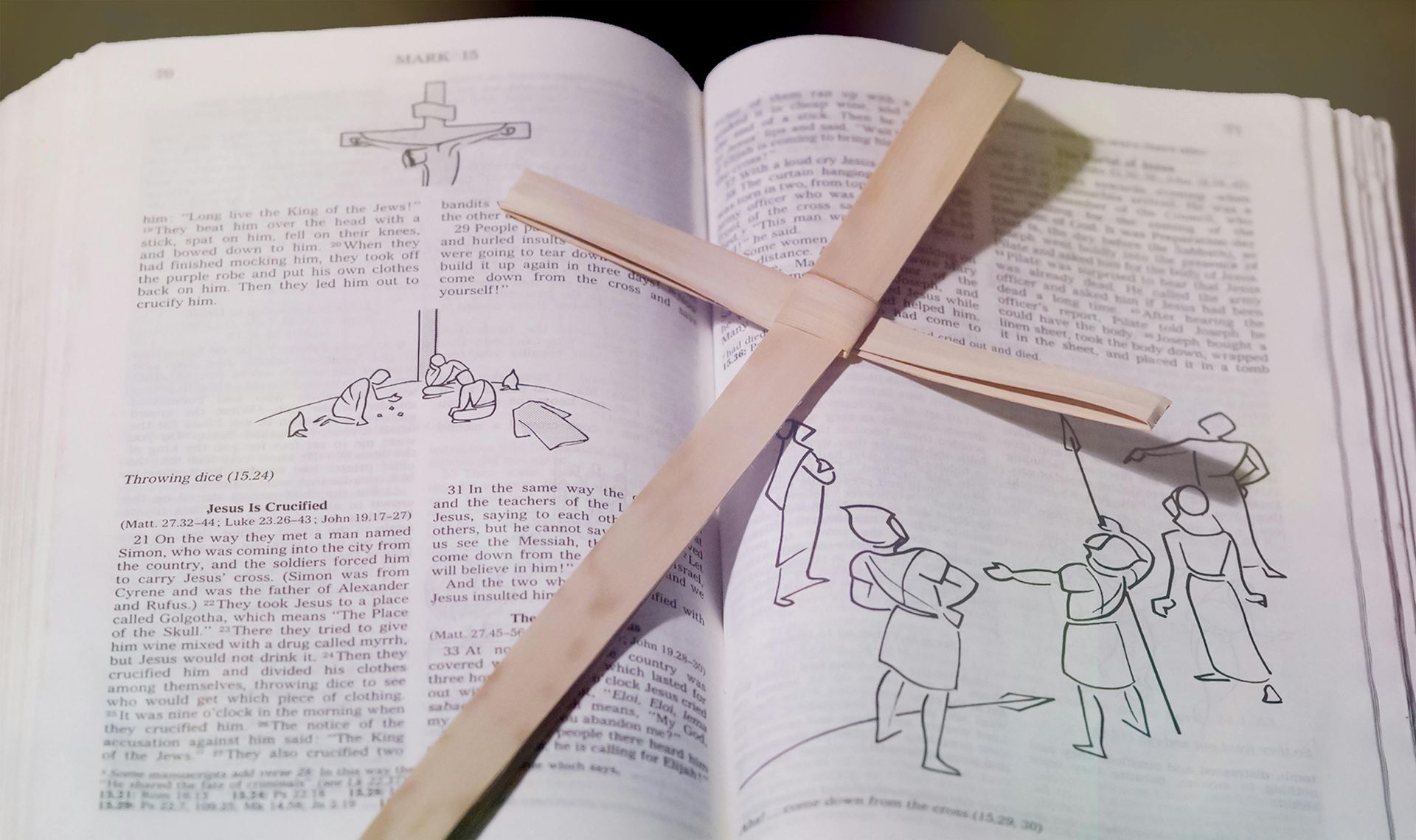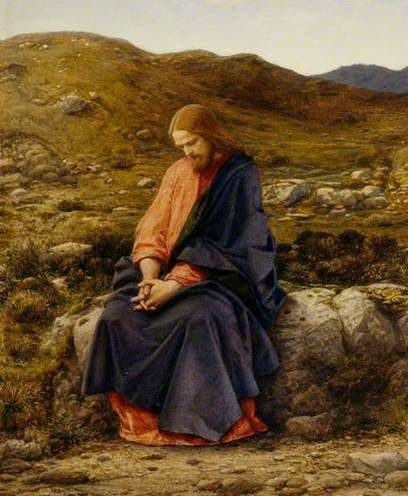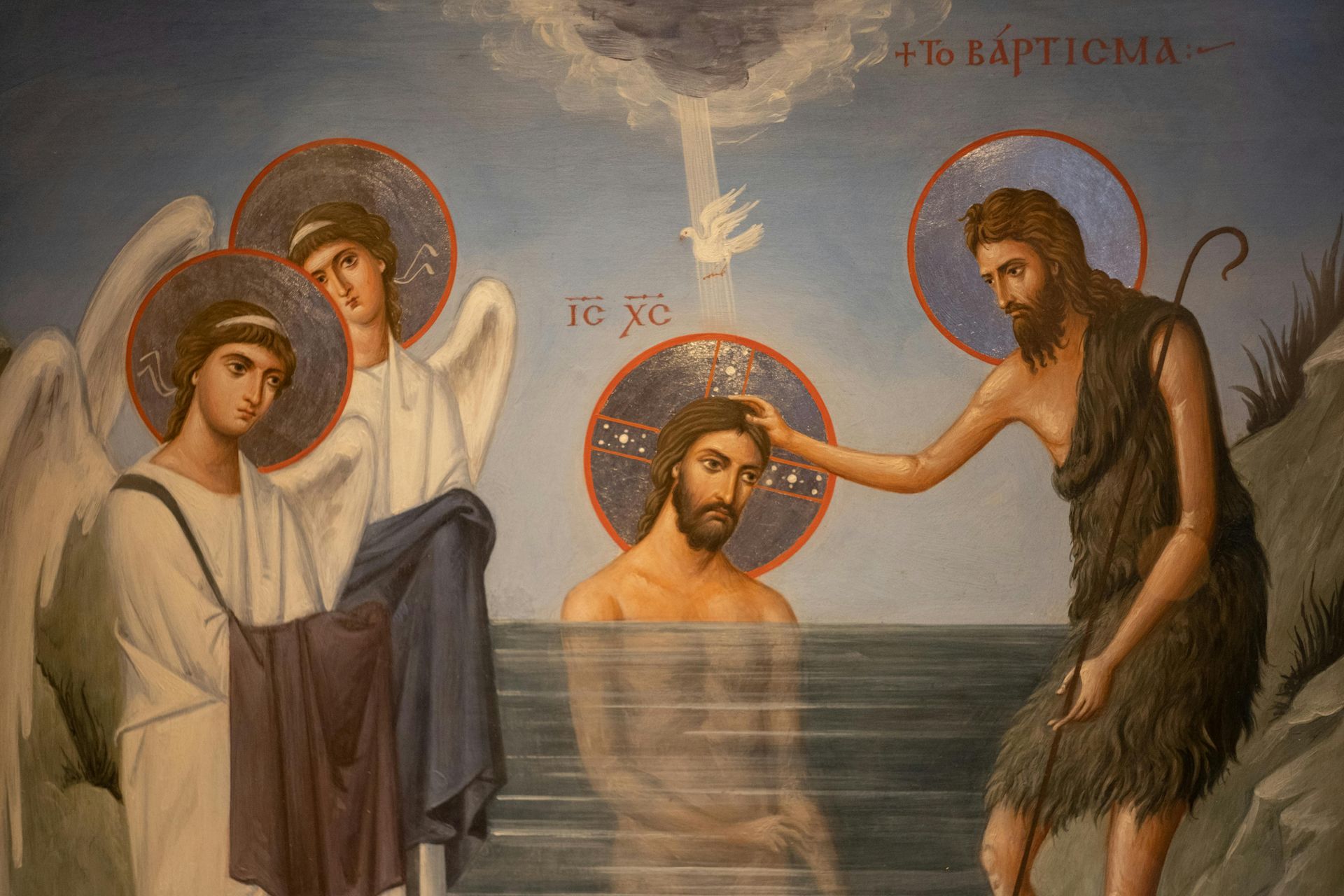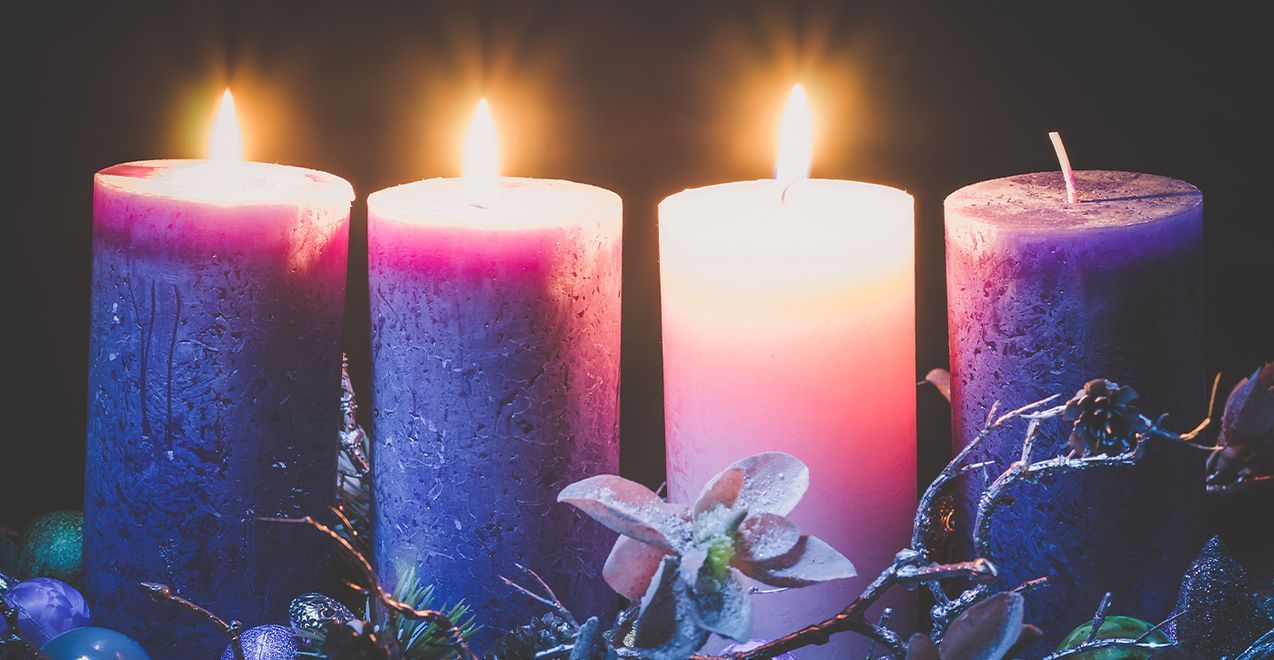Deacon Paul's Homilies

I have long thought that the Church gives us the two Gospel passages we hear today — the account of Jesus’ triumphant entry into Jerusalem and the account of his Passion and death — for very practical reasons: this is the last Sunday before Easter when we will celebrate Christ’s Resurrection and not everyone is able to attend and celebrate the Triduum liturgies during Holy Week. Therefore, the Church places these two critical Gospel passages together so that we hear and experience them in a regular Sunday Mass setting — literally, to ‘fit them in’ before Easter. But there is another equally, if not more, important reason we are to experience these Gospel passages together. And I honestly don’t know if the Church intends this reason or not, but I believe the Holy Spirit intends it. These two Gospel passages remind us as much as any passage that Jesus Christ, while fully Divine, is also fully human. He is like us in all manner except one, in committing sin. He therefore shares with us the experience of the full range of our humanity. In these two Gospel passages we experience Christ moving from triumph to tragedy, from soaring to suffering: the triumphant, soaring entry into Jerusalem and the suffering and tragedy of His Passion and crucifixion. Christ’s human experience is also our human experience, for do not we all experience triumph and tragedy, soaring and suffering? Therefore, we do not have a God and Savior who cannot sympathize with our human experience, but rather one who shares it with us! And we have a God and Savior who not only soared and suffered for us, but soars and suffers with us. Not just two thousand years ago, but right here, right now, in every minute of our lives. For what did Jesus promise? “I am with you always , until the end of time.” (Mt 28:20) When we soar and triumph, Jesus is with us, by our side. And when we suffer and experience tragedy, especially, Jesus is with us, by our side. We are encouraged to give thanks to God in our triumphs and soaring. And we are invited to unite our suffering with Christ’s suffering and offer it up for whatever or whomever is in need. Christ’s suffering was not pointless, and united to His, neither is ours. We offer it up, trust, and hope. Sisters and brothers, that hope comes from our knowledge of the rest of the Gospel story that we will experience with Christ: that His triumph and tragedy, His soaring and suffering does not end in death, but in the glory of Easter Resurrection.

One of the enduring memories that I have growing up on the farm as a boy and young man was the annual spring ritual of picking stones from the fields that we had tilled for the planting of corn or a new seeding of hay crop. After the fields had been plowed and then harrowed, we would enter into the field, often the whole family, accompanying our tractor with its bucket loader. Each of us would begin this methodical search for stones that were large enough to cause damage to the crop planting and harvesting machinery. When we found those stones, we would then pick them up and throw them, or carry and drop them, into the tractor bucket. With the largest stones, the best we could do was to pry them up out of the brown earth with our hands and roll and flop them into the tractor bucket. The image in my mind’s eye of the barren stony field with its brown tilled earth, and our methodical wandering back and forth, back and forth, back and forth in front of the tractor searching for stones to pick, conjures a parallel image of the Israelites wandering in the barren desert, a story we are reminded of by Moses in the first reading we heard today — a story not just of the Israelites wandering in the desert alone but, as Moses reminds them, wandering accompanied by God who heard their cry, saw their affliction, their toil, and their oppression , and led and accompanied them out of that. They were not alone; God was with them in the midst of their deserts and provided for them. We are encouraged to remember this today, as we wander in our own desert fields, picking stones from our lives: God is with us, by our sides, in our midst. And God the Son, Jesus Christ, invites us to seek his help in doing so. He tells us: “Come to me, all you who are burdened, and I will give you rest.” (Mt 11:28) It is desert and stones again that we hear of also in the Gospel passage. Jesus Christ has been in a self-sacrificing fast in the desert, is hungry, and is tempted by the devil to use his power to turn stones into bread and to feed on them. He resists the temptation — pointing to and drawing strength from reliance on God. Are we often tempted to feed on the stones that we carry in the desert fields of our lives? How often are those stones temptations, not to feed on something seemingly desirable, like bread, but rather to feed on that which is unpalatable — such as stones of bitterness, animosity, anger, discord, fear, discouragement, or useless anxiety. I think those are just as often the weighty stones we carry in our desert fields and that we may be tempted to feed on. It takes conscious effort to reach out to God for grace, in even the simplest of prayers, to resist these temptations, recognizing that often God’s grace comes through others around us who help us, support us, and love us. Let us not forget that we have in Jesus Christ one who, like us, has been similarly tested through what he endured; he is able to help us who are being tested ( cf Heb 2:18). One who invites us: “Come to me, all you who are burdened, and I will give you rest.” Jesus invites us to give him our burdens, our stones — whatever they may be: bitterness, animosity, anger, judgmentalism, fear, discouragement, anxiety — all of the things that ultimately rob us of the joy God and Christ desire for us. We have an invitation and a choice to give these over to Christ —to let go of these stones. It is an invitation and choice that is mirrored symbolically in our parish invitation in the bulletin over the last few weeks to leave a stone at the foot of Christ’s Cross here in the well throughout Lent. A ritual act of handing over, letting go, and letting God; letting God take our stones which do not and cannot feed us, and instead feed us with his True Food and life-giving Word and Spirit. If you have not thought to bring a stone from home, fear not; there are a bucket of them here in the well. And, don’t worry about dropping your stone on the burlap desert sands; there is plenty of padding underneath! And as we leave our stones behind, maybe we can pick up and take away with us the kindness Fr. Chris invited us to share in his homily on Ash Wednesday; kindness that we feed each other with, looking out for each other, loving each other. It’ll be the same kindness that will end up feeding us .

I have a question for you: Did Jesus Christ need to be baptized? Approaching this question academically, knowing that Baptism is one of seven sacraments the Church recognizes, we might begin to answer that by asking, “What is a sacrament?” The classic definition of a sacrament is that it is an outward (that is, a visible) sign, instituted by Christ, to convey God’s grace for our sanctification — to help us grow in holiness. So does it make sense that Jesus Christ would receive a sacrament instituted by himself to convey God’s grace when he is already fully divine — God the Son? Yeah, doesn’t make much sense, does it? And on top of that, if we consider that one of the primary sacramental effects of Baptism is the forgiveness of all sin, both original sin and personal sin, and we consider that Jesus Christ, fully divine and at the same time fully human , is like us in all things except sin, then Christ has no need to be baptized to receive this sacramental effect! So pulling those few strands of logic together, I think we can conclude that Jesus does not need to be baptized for the reasons that you and I need to be baptized! …But does Jesus Christ need to be baptized… for our sake ? That is a different, and interesting, question. Today we hear from Luke’s version of the Baptism narrative, but in Matthew’s version, when John the Baptist questions whether he is worthy to baptize Christ, Jesus says “Allow it now ... to fulfill all righteousness” (Mt 3:15). Considering the definition of a sacrament I gave you a few moments ago — that a sacrament is a visible sign instituted by Christ — some theologians and Church Fathers point to Christ’s own Baptism as that very institution, or at least the beginning of the institution of the Sacrament! By physically entering into the waters of the Jordan, and by extension the waters of all the earth, Christ blesses them and sanctifies them, that they may in turn become the matter of our sanctification in Baptism. Each of the seven Sacraments of the Church has form and matter: the form consists of the words and actions of the sacrament, and the matter is the substance or prerequisite for the sacrament. Water is the matter for the Sacrament of Baptism. So in a manner, Christ needs to be baptized to establish the sacramental matter and form of Baptism for our benefit. He leads the way for us, that we may watch, listen, and follow him, leading the way by having himself baptized. Interestingly, we re-present Christ’s sanctifying entry into the waters of the Jordan at his Baptism at each Easter Vigil before we baptize our adult candidates when we dip the large Paschal candle, the Christ candle, into the waters of the Baptismal font three times — Father, Son, Holy Spirit — Christ again blessing them, making them holy, making them the matter for Baptism, the matter of our sanctification, symbolic of our cleansing from sin through Christ. There is another connection to the waters of Baptism and the sacramental effects of Baptism that is pointed to in the imagery of Luke’s Gospel we heard today: it is the descent of the Holy Spirit from heaven “… like a dove .” The dove reminds us of the action of the Holy Spirit, literally the breath of God upon the waters of the earth at the dawn of creation, bringing forth new life. The Holy Spirit descends upon Christ, revealing him as the new creation of humanity. Jesus Christ — God the Son, the Word of God — became flesh, became one of us, that we might become a new creation in Him . In Baptism we die to our old human nature of sin and its consequences that lead to perpetual separation from God and one another. In the waters of Baptism we are united to Christ’s death, with our sins washed and buried in the waters of Baptism. And from the birth-waters of Baptism we rise with Christ, sharing in His Resurrection to new life, united to Christ forever, sharing in Christ’s divine nature. We invoke this symbolism, and our faith, not only at each Baptism, but each time we bless ourselves with holy water, and at each funeral, when we sprinkle the casket or urn with holy water and pray: “In the waters of Baptism [person] died with Christ and rose with Him to new life. May he/she now share with Christ eternal glory.” We symbolize this new creation we have become through Baptism with the white garment that is donned following the Baptismal rite. Infants are traditionally dressed in white outfits. Here at St. Mary’s, we use white garments for infants, hand-made by parishioners, itself beautifully symbolic of the child joining and being welcomed by our parish Christian community. Baptized adults don a white alb, similar to what Fr. Chris and I wear under our vestments. The white garment is symbolic of the newly-Baptized having put on Christ and risen with him. St. Gregory Nazianzus, a fourth-century bishop and Doctor of the Church, also taught that the white clothing of Christ also veils our shame, the wound of our sin. Baptized and resurrected with Christ, the sin is gone, but we bear the scars, just as the Resurrected Christ bore the wounds of His crucifixion. God’s rich love and mercy are poured out upon us as salvation and grace through the Holy Trinity in the Sacrament of Baptism. There is nothing we do to merit or earn this salvation: it is God’s free gift, poured out upon us. This is what St. Paul spoke of in his letter to Titus: …not because of any righteous deeds we had done but because of his mercy, He saved us through the bath of rebirth and renewal by the Holy Spirit, whom he richly poured out on us through Jesus Christ our savior. (Titus 3:5-6) We are only called to seek, accept, and cooperate with God’s grace in leading a holy life. In Baptism we are incorporated into Christ and configured to Christ, marked with an indelible spiritual mark upon our soul, that claims us as belonging to Christ. And once we have been claimed by Christ, we can never be unclaimed.

Okay, so I need to address the pink elephant in the room — you all are thinking Fr. Chris and I are wearing pink vestments today! They are not pink, but technically, liturgically speaking, they are Rose. There is a church joke out there that will forever help you honor this subtle, but important distinction: these vestments are rose-colored because Jesus “rose” from the dead, he did not “pink” from the dead! But seriously, in the Church, the liturgical colors are important; they have meaning. Today, the third Sunday of Advent, is known as Gaudete Sunday. Gaudete means “Rejoice” in Latin. We rejoice because of the imminent coming of our Lord, who literally births into our world like a flower blooming, bursting forth amidst a desert of thorns…like a rose! The rose color reminds us of this truth and that we should rejoice at the Lord’s bursting forth into our lives amidst the desert of thorns we perceive and experience in our own lives — thorns that sometimes scratch us, wound us, hurt us. Yet that beautiful, fragrant bloom comes amidst those thorns, amidst our hurt — just as our God does. The liturgical color scheme of Advent (and Lent as well) reminds us of this truth. The purple color — technically violet — is a penitential color. I always tell the servers, “ P urple ribbon for P enitential Act!” Advent, like Lent, is a penitential season. We reflect on our fallen nature, our wounded state during this season, not in an unhealthy, perseverative “I am unworthy” way, but rather in a contemplative way that leads us to awareness of how we have hurt others and ourselves and caused separation and division — a way of spiritual growth that leads us in humility to reconciliation with God and one another, drawing us into a communion of love with God and one another. So the Church chooses the somber violet color to remind and invite us into a somber reflection of our fallen humanity, of our wounded and wounding nature, not to lead us there and leave us there, but in point of fact to lead us out of there through our salvation and redemption in Christ. Something to be hopeful for, something to look forward to, something to anticipate — to anticipate, as we do in this season of Advent, the coming of Christ our Lord! You see, violet is also a color of royalty; so the violet of Advent anticipates the coming of Christ our King! This Rose color we choose today is a reminder of Christ's imminent arrival, his about-to-burst-forth, blooming into our lives. Fr. Hyacinth Cordell, a Dominican priest, has described the rose color as “violet approaching white.” The pure white is the light of Christ coming into the world. As Fr. Cordell writes, the Rose color anticipates the pure white of the Birth and Resurrection of Christ. A birth and resurrection we are invited to participate in over and over again, with every Baptism, with every Reconciliation, with every Eucharist, with every act of love. Indeed, what’s not to be joyful about? And the Rose color of the Advent candle, the Rose color of these vestments, proclaim that Joy! But I know; I get it. Most of us are not capital J-O-Y-Joyful! In fact, we often struggle to be lower-case j-o-y-joyful amidst the thorny thickets of daily life that reach out and grab us, hook us, wounding us and distracting us — obfuscating our path and experience of joy. This is real. How do we find joy in the midst of this reality? First, maintain our faith and hope in Christ the Light, despite all that is going on around us, recalling that he illuminates the darkness and conquers all of the trials of this life. Secondly, enter into and become the Light of Christ. Bear the Light of Christ to each other. Reach out to one another, serve one another; give to one another and do not expect anything in return. In bearing the light of Christ to one another, we will find the Joy of Christ blossoming in our lives. Sometimes the best therapy is to go help someone else. The Gospel passage heard today reminds us of this: Share your cloak and food with the person who has none… Stop collecting more than what is prescribed… Do not practice extortion or falsely accuse anyone… Be satisfied with your wages… Sisters and brothers, remember the simple act of reaching out to someone you know or a stranger with a simple work or deed of kindness can have the profound effect of imparting the Light of Christ, and joy, abiding joy to both them and us, in whatever darkness we may be experiencing. Never underestimate that. A story that Saint Mother Teresa of Kolkata told reminds of this truth. She writes: I will never forget the first time I came to Bourke [Australia] and visited with the sisters. We went to the outskirts of Bourke. There was a big reserv[ation] where all of the Aborigines were living in those little small shacks made of tin and old cardboard ... I entered one of those [little shacks] but it was only one room, and inside the room everything .... I told the man living there, “Please let me make your bed, to wash your clothes, to clean your room.” And he kept saying “I’m alright, I’m alright.” And I said to him, “But you will be more alright if you allow me to do it.” [Finally] he allowed me… After I cleaned the room I found in the corner of the room a big lamp full of dirt and I said, “Don’t you light this lamp, such a beautiful lamp[?]. Don’t you light it?” He replied, “For whom? Months and months nobody has ever come to me. For whom will I light it?” So I said, “Won’t you light it if the Sisters come to you?” And he said “Yes.” So the sisters started going to him for only about 5 to 10 minutes a day, but they started lighting that lamp. After some time he got in the habit of lighting [the lamp]. Slowly, slowly, slowly the Sisters stopped going to him. I forgot completely about that, and after two years he sent word — “Tell Mother, my friend, the light she lit in my life is still burning.”



